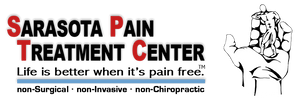Disc Herniation
 DISC HERNIATION - Symptoms and Treatment:
DISC HERNIATION - Symptoms and Treatment:Neurosomatic Therapy has taught us that the most likely factor in the cause of herniated discs is a scoliotic pattern in the spine.
+Forces created by postural distortion weaken intervertebral discs.
+Disc herniation’s can range from a mild bulge to a full rupture.
+Herniations occur most often in the lumbar and cervical spine.
+Symptoms can vary depending on the location of the herniation but can include; pain, loss of feeling and loss of function in the affected area.
+Compression of neurological structures and muscular spasm are major sources of pain.
SYMPTOMS:
Symptoms from a herniated disc can vary depending on its location and severity. Typically the most commonly occurring herniations form in the lumbar and cervical areas of the spine. Cervical disc herniations can result in pain in the head and neck as well as radiating pain into the shoulder and arm, often a result of whiplash. More common, lumbar disc herniations can cause very specific pain in the low back, hips and legs. Sciatic pain is often related to the compression of the sciatic nerve roots exiting the spine by a herniated disc. Numbness, tingling, weakness, paralysis and decreased reflexes are also associated with the compression of neurological structures by a herniated disc. In addition, muscle spasm can be a major contributor to pain and trigger point referral, these trigger points can often mimic sciatic pain. The body tends to lock down the muscles around an injured area, such as a herniation, to reduce movement and protect the area from additional injury. Also, postural distortions, that contributed to the disc herniation in the first place, produce muscle pain due to a chronic spasm/strain pattern.
CAUSES:
A quick search for information on bulging or herniated spinal discs will tell you that intervertebral discs are under constant pressure and, as a person ages and the disc material weakens, they become prone to the bulging or rupturing associated with this condition. The information that is most obviously missing from this information is why. The same quick search will reveal that the most common treatments for bulging or herniated discs attempt to address the resulting symptoms and not this underlying cause. Our 30 year study of posture and its effect on the spine and intervertebral discs has given us a unique approach to understanding and treating the cause of disc herniations, providing relief from a current injury and helping to prevent re-injury in the future. Posture is key!
Intervertebral discs are made up of a tough, fibrous outer layer, called the annulus fibrosis, and a soft gel material on the inside, called the nucleus pulposis. These discs provide shock absorption for the spine as well as being connective tissue that helps hold the vertebrae together. This cushioned space between the vertebrae also allows for much of the movement of the spine. Bulging discs usually occur when pressures on the disc cause the outer fibers of the disc to weaken and stretch out. Continued pressures on the disc can cause the bulge to progress to a point where the herniation ruptures and expels the nucleus pulposis out of the disc. In either case, disc material can compress nerve roots leaving the spinal cord or the spinal cord itself causing pain, loss of feeling, or loss of function in the body.
ADVANCED NON-SURGICAL TREATMENT:
Posturology, the study of human posture - an integral part of Neurosomatic Therapy, tells us that the most likely factor in the cause of herniated discs is a scoliotic pattern in the spine. Scoliosis is described as any curvature of the spine that deviates from a normal alignment. In many of the cases we see these scoliotic curvatures have developed as a result of a compensation in the pelvis – specifically the tilting of the sacrum, the very lowest level of the spine that sits between both of your hip bones. Compensatory scoliosis can appear as lateral curvatures, kyphosis/lordosis (exaggerated front to back curves) or even rotoscoliosis (a twisting distortion of the spine). Each of these patterns produces forces on the intervertebral discs that can weaken the tough outer fibers of the disc and push disc material out of its normal space and into nerve roots or the spinal cord itself. Many of our patients are surprised to hear that compensatory scoliosis is not a permanent condition and can be corrected. Again the key to addressing scoliosis and any disc herniation is a proper analysis for postural distortions. Muscular imbalance and skeletal asymmetries are the main causes for tilting of the sacral base according to Dr. Janet Travell and Dr. David Simons in Myofascial Pain and Dysfunction. Addressing structural asymmetries and applying the soft tissue release techniques incorporated in Neurosomatic Therapy can relieve pressures caused by curvatures of the spine. When this pressure is removed, the herniated disc will tend to migrate back into the space it normally occupies. Furthermore, by restoring proper posture, pain symptoms related to muscular imbalances are alleviated.
Call today to let one of our expert therapists answer any questions you may have regarding a Herniated Disc.
